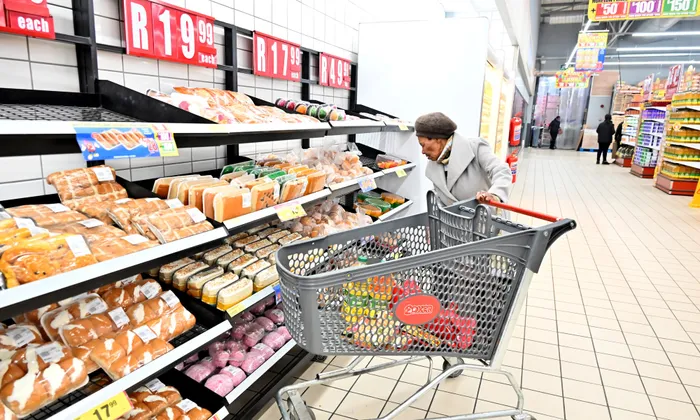Consumers to still feel the pinch in spite of slowing producer prices

Stats SA said food products, beverages and tobacco products increased by 3.8% year-on-year and metals, machinery, equipment and computing equipment increased by 5.5% year-on-year in May. Image: AYANDA NDAMANE / Independent Newspapers.
CONSUMERS will continue to feel price pressure deep into the second half of the year in spite of prices for finished manufactured goods falling more than expected in May, mainly driven by non-metallic mineral products prices.
Data from Statistics South Africa (Stats SA) yesterday showed that the annual producer price inflation (PPI) detracted from consumer price inflation (CPI) and declined to 4.6% in May, down from a six-month high of 5.1% in April, and below market forecasts of 4.8%.
In contrast, this May PPI reading comes on the back of stubbornly high CPI, which remained unchanged at 5.2% in May on higher transport, alcoholic beverages and tobacco prices.
Stats SA said the main contributors to the headline PPI annual inflation rate were the 7.3% increase in coke, petroleum, chemical, rubber and plastic products.
Food products, beverages and tobacco products increased by 3.8% year-on-year and metals, machinery, equipment and computing equipment increased by 5.5% year-on-year.
“A breakdown of the food basket indicates that meat and meat products price inflation grew by 1.3% month-on-month and 4.1% year-on-year, from 1.7% previously,” said Investec economist Lara Hodes.
“Prices of fruit and vegetables rose by 12.1% y/y from 10.9% y/y in April, while inflation within the grain mill products category increased by 3.4% m/m and 4.6% y/y from 1.8% y/y previously.”
According to the Agricultural Business Chamber (Agbiz), the mid-summer drought in South Africa resulted in a 25% decline in the white maize harvest to an estimated 6.4 million tonnes.
This resulted in “a surge in white maize prices” from the end of the first quarter to the second quarter.
However, Agbiz did stress that “moderate wheat prices, supported by ample global supplies and a relatively firmer domestic currency, will somewhat mitigate the sharper price increase in this food category”.
On a monthly basis, Stats SA said producer prices edged up by 0.1% in May, following a 0.5% increase in April.
Nedbank economist Johannes (Matimba) Khosa said producer inflation will likely increase moderately in the coming months off a lower base.
Khosa said the worst of the El Niño phenomenon has ended; therefore, the upside risks for food prices have moderated.
“However, the lagged impact of the excessive heat earlier in the year, which has damaged the summer crop harvest, will still filter through food prices in the months ahead.
“Lower global inflation will still mitigate the upside to local food prices. Fuel prices and the vulnerable rand remain significant concerns,” Khosa said.
“While relatively subdued global demand and ample supply will likely keep oil prices in check over the short term, the ongoing Russia-Ukraine and Israel-Hamas conflicts still pose upside risks.
“At the same time, the rand remains vulnerable as the US Fed delays its interest rate cuts. Other operational costs will likely stay elevated. However, producers will still be forced to absorb most of the cost pressures as weak consumer spending continues to limit the pass-through.”
BUSINESS REPORT